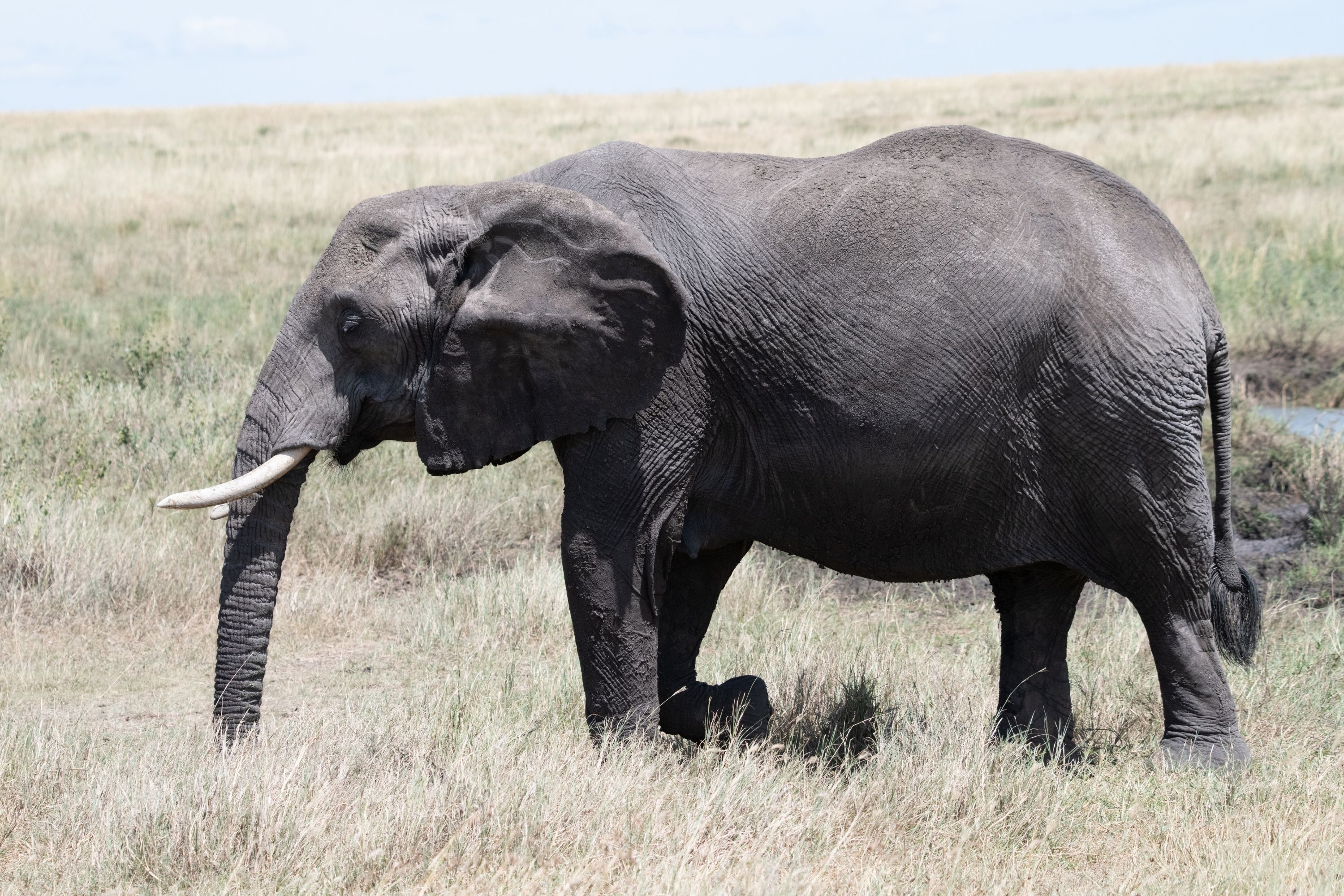African bush elephant
(Loxodonta africana)

Description
The African bush elephant (Loxodonta africana), also known as the African savanna elephant, is one of two living African elephant species. It is the largest living terrestrial animal, with bulls reaching a shoulder height of up to 3.96 m (13 ft 0 in) and a body mass of up to 10.4 t (11.5 short tons). It is distributed across 37 African countries and inhabits forests, grasslands and woodlands, wetlands and agricultural land. The African bush elephant occurs in Sub-Saharan Africa including Uganda, Kenya, Tanzania, Botswana, Zimbabwe, Namibia, Zambia, and Angola. It moves between a variety of habitats, including subtropical and temperate forests, dry and seasonally flooded grasslands, and woodlands, wetlands and agricultural land from sea level to mountain slopes. In Mali and Namibia, it also inhabits desert and semi-desert areas. In Ethiopia, the African bush elephant has historically been recorded up to an elevation of 2,500 m (8,200 ft). By the late 1970s, the population had declined to a herd in the Dawa River valley and one close to the Kenyan border. The core of elephant society is the family unit, which comprises several adult cows, their daughters, and their prepubertal sons. Iain Douglas-Hamilton, who observed African bush elephants for 4.5 years in Lake Manyara National Park, coined the term 'kinship group' for two or more family units that have close ties. The family unit is led by a matriarch who at times also leads the kinship group.Groups cooperate in locating food and water, in self-defense, and in caring for offspring (termed allomothering). Group size varies seasonally and between locations. In Tsavo East and Tsavo West National Parks, groups are bigger in the rainy season and in areas with open vegetation. Aerial surveys in the late 1960s to early 1970s revealed an average group size of 6.3 individuals in Uganda's Rwenzori National Park and 28.8 individuals in Chambura Game Reserve. In both sites, elephants aggregated during the wet season, whereas groups were smaller in the dry season.
Taxonomic tree:







